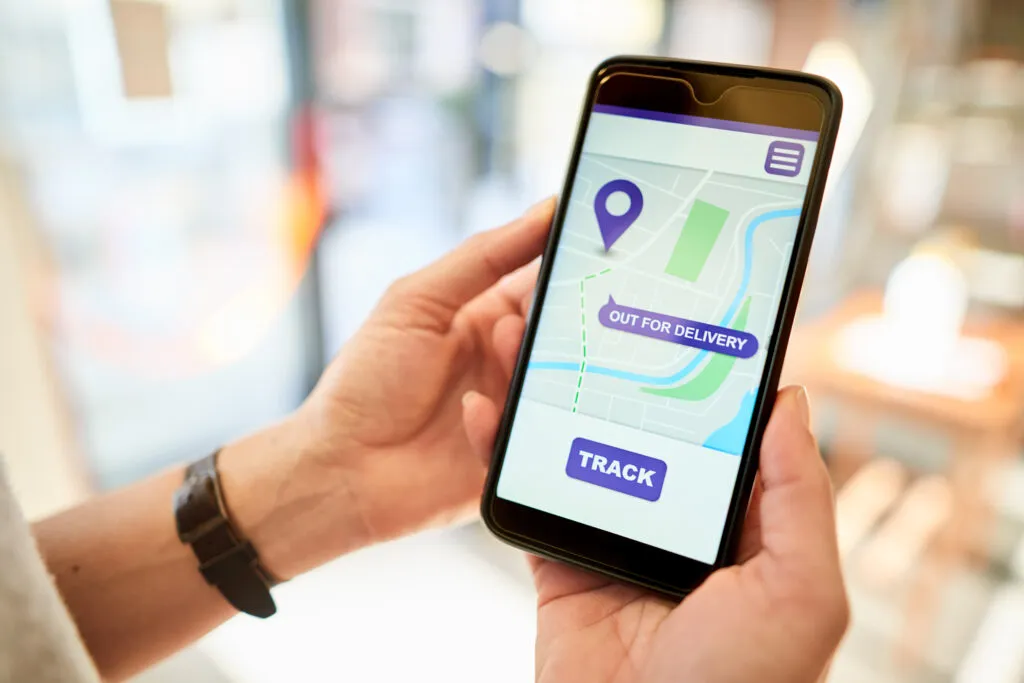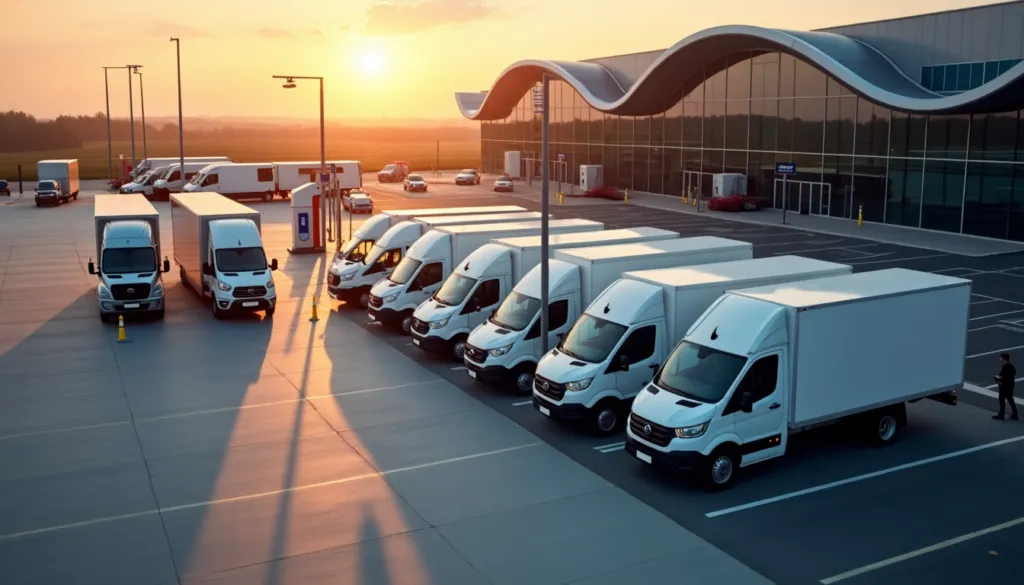
Get home early with RoadWarrior.
Enter your stops, optimize your routes, manage your team – quickly and efficiently.
Try RoadWarrior free for 7 days
Try free for 7 daysBuying a delivery route can be a lucrative business opportunity. As the demand for delivery services continues to grow, owning a delivery route allows you to tap into this profitable industry. If you’re considering buying a delivery route, this comprehensive guide will walk you through the process step-by-step, offering valuable insights and tips to help you make informed decisions and set yourself up for success.
1. Understanding the Basics of a Delivery Route Business
A delivery route business involves purchasing a franchise from an established brand to own, operate, and deliver using their existing routes. These routes can be protected, meaning no other franchisee can enter your designated geographic area, or independent, offering more flexibility but also more competition. The types of delivery routes vary, ranging from courier routes for companies like FedEx and UPS to food delivery service routes for restaurants or meal prep providers.
2. Why Buying a Delivery Route is a Lucrative Opportunity
The logistics market is already thriving, and it is projected to reach a value of $6.55 trillion by 2027. Buying a delivery route allows you to tap into this growing industry and establish a consistent and passive source of income. For example, a FedEx route can generate an average annual profit ranging from $30,000 to $40,000. By running multiple routes, you can quickly increase your earnings and achieve six-figure profits.
3. Conducting Market Research and Evaluating Routes
Before finalizing a purchase, it is crucial to conduct thorough market research and evaluate different routes. This step ensures that you invest in a profitable route that aligns with your goals and objectives. Look for routes that have a high demand for deliveries and offer growth potential. Consider the population density, competition, and market trends in the chosen area to make an informed decision.
4. Exploring Available Delivery Routes
There are various ways to find available delivery routes. You can directly contact well-known brands like FedEx or explore online platforms that advertise routes for sale. Some popular platforms for buying delivery routes in the US include The Route Exchange, BizBuySell, BizQuest, Nationalida, KR Capital, and Routes to Success. These platforms provide comprehensive listings and allow you to search based on location, opportunity type, and other criteria.
5. Researching the Route and Company
Once you find a route you’re interested in, it’s crucial to conduct thorough research on both the route and the company. Look for concrete statistics and data about the route, such as average mileage, delivery stops, and package volume. This information will give you insights into the route’s profitability and potential challenges. Additionally, assess the company’s reputation, policies, and work culture to ensure a good fit for your business.
6. Securing Funding
Purchasing a delivery route can be a significant investment, so securing funding is often necessary. Explore funding options such as bank loans, Small Business Administration (SBA) loans, or private investors. Prepare a solid business plan that includes a description of your services, marketing strategies, and financial projections. This plan will help you convince lenders or investors to support your business venture.
7. Getting Approval from the Company
Once you have identified a route and secured funding, you need to obtain approval from the company whose route you intend to buy. Each company has its own criteria and requirements for potential route owners. For example, FedEx Ground requires delivery vehicles to have Vehicle Event Data Recording (VEDR) safety technology. You may also need to register your delivery route business, obtain a Federal Employer Identification Number (FEIN), and sign a nondisclosure agreement (NDA) to protect sensitive business information.
8. Managing Routes and Drivers
As the owner of a delivery route business, it is essential to develop a robust plan for managing routes and drivers. Efficient route management ensures timely deliveries and maximizes profitability. Utilize technology and tools like Upper Route (formerly known as RoadWarrior Flex) to optimize your routes, plan the most efficient delivery sequence, and minimize fuel and time wastage. Effective driver management, training, and performance tracking are also crucial for a successful delivery route business.
9. Mitigating Risks and Challenges
Like any business venture, owning a delivery route comes with its own set of risks and challenges. It is important to be aware of these risks and have strategies in place to mitigate them. Some common risks include changing market trends, competition, high capital investment, and potential regulatory concerns. Stay updated on industry trends, maintain strong relationships with suppliers, and adapt your business strategies accordingly to navigate these challenges successfully.
10. Expanding and Scaling Your Business
Once you have established a successful delivery route business, you can explore opportunities for expansion and scaling. Consider acquiring additional routes or diversifying your services to cater to different market segments. Continuously analyze and optimize your operations to improve efficiency and profitability. Invest in marketing and customer relationship management to expand your customer base and increase revenue.
11. Embracing Technology
In today’s digital age, leveraging technology is crucial for the success of any business, including delivery route businesses. Explore route optimization software like Upper Route to streamline your operations, plan the most efficient routes, and improve driver productivity. Upper Route offers features like paperless proof of delivery, real-time tracking, and customer notifications, enhancing the overall customer experience and optimizing your business processes.
12. Conclusion
Buying a delivery route can be a lucrative business opportunity in the thriving logistics market. With careful research, planning, and effective route and driver management, you can establish a successful delivery route business and achieve consistent profits. Embrace technology, stay updated on industry trends, and continuously optimize your operations to stay ahead in this competitive industry. By following the steps outlined in this guide, you can confidently navigate the process of buying a delivery route and set yourself up for long-term success.
Note: Upper Route (formerly known as RoadWarrior Flex) is a route optimization software that helps delivery route businesses improve efficiency and productivity. It provides features like optimized routes, real-time tracking, and proof of delivery. To learn more about Upper Route and its benefits, visit their website and sign up for a free trial.
“Owning a delivery route business allows you to tap into the booming logistics market and establish a consistent source of income.” – Source
Key Takeaways:
- Buying a delivery route can provide a lucrative business opportunity in the growing logistics market.
- Conduct thorough market research to identify profitable routes with growth potential.
- Explore online platforms and contact established brands to find available delivery routes.
- Research the route and company to ensure a good fit for your business.
- Secure funding through bank loans, SBA loans, or private investors.
- Obtain approval from the company and fulfill their criteria.
- Develop a robust plan for managing routes and drivers to maximize efficiency and profitability.
- Mitigate risks and challenges by staying updated on industry trends and adapting strategies accordingly.
- Embrace technology, such as Upper Route, to optimize routes and improve operations.
- Explore opportunities for expansion and scaling once your business is established.
- Stay ahead in the competitive industry by continuously optimizing operations and embracing technology.


